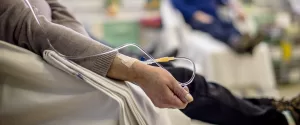Understanding the Different Types of Chemotherapy
As you navigate a cancer diagnosis, understanding your treatment options is crucial. Chemotherapy remains one of the most common and effective approaches, but did you know there are actually several distinct types? Each targets cancer cells in unique ways and may be used alone or in combination. By familiarizing yourself with the various chemotherapy classifications, you can have more informed discussions with your oncology team and feel more empowered in your treatment journey. This overview will introduce you to the main categories of chemotherapy drugs, their mechanisms of action, and typical use cases to provide a foundation for exploring your options.
Overview of Chemotherapy
Chemotherapy is a powerful treatment that uses cancer drugs to destroy or slow the growth of cancer cells. This type of therapy works by targeting rapidly dividing cells, which is a characteristic of most types of chemotherapy. While effective against cancer, it can also affect healthy cells, leading to side effects. Chemotherapy may be used alone or in combination with other treatments like radiation or surgery, depending on the cancer type and stage. According to Cleveland Clinic, chemotherapy can be administered in various ways, including intravenously, orally, or topically. The specific regimen and duration of treatment are tailored to each patient’s needs, with the goal of eliminating cancer, controlling its growth, or alleviating symptoms.
The Most Common Chemotherapy Drugs
Understanding the different types of chemotherapy is crucial for patients and caregivers. According to medical experts, there are several main categories of cancer drugs, each working uniquely to disrupt cell growth and division. These include:
Alkylating Agents and Antimetabolites
Alkylating agents damage cancer cell DNA, while antimetabolites starve cells of essential nutrients. Common drugs in these categories are cyclophosphamide and 5-fluorouracil, respectively.
Plant Alkaloids and Anti-tumor Antibiotics
Plant alkaloids, such as paclitaxel, prevent cell division during specific growth phases. Anti-tumor antibiotics like doxorubicin cause DNA strands to unravel. Doctors select these types of chemotherapy based on cancer type and stage, aiming for maximum effectiveness and minimal side effects.
How Chemotherapy Drugs Work
Chemotherapy drugs are powerful medicines designed to combat cancer by targeting rapidly dividing cells. These types of chemotherapy work by interfering with the cell cycle, preventing cancer cells from multiplying and spreading. Different cancer drugs operate in various ways:
- Alkylating agents damage DNA
- Antimetabolites disrupt DNA and RNA synthesis
- Topoisomerase inhibitors interfere with enzymes crucial for cell division
According to the Cleveland Clinic, chemotherapy can also treat certain autoimmune diseases and blood disorders by halting abnormal cell growth. While effective against cancer, these drugs may affect healthy cells, leading to side effects like fatigue and hair loss.
Different Types of Chemotherapy
Chemotherapy, a common treatment for cancer, encompasses various types of cancer drugs that work in different ways to combat the disease. There are over 100 different chemotherapy medicines, categorized into several main types. These include alkylating agents, which damage cancer cell DNA, and antimetabolites, which prevent cancer cells from creating new genetic material. Other types of chemotherapy include anti-tumor antibiotics, topoisomerase inhibitors, and mitotic inhibitors, each targeting specific cellular processes to halt cancer growth. The choice of chemotherapy drug depends on factors such as the type and stage of cancer, as well as the patient’s overall health. Understanding these different types of chemotherapy can help patients and their families better navigate treatment options and potential side effects.
Side Effects of Chemotherapy
Chemotherapy, while effective in treating cancer, can cause various side effects due to its impact on healthy cells. Common side effects of chemotherapy include fatigue, hair loss, nausea, and increased risk of infections. These effects occur because cancer drugs target rapidly dividing cells, which include both cancerous and some normal cells.
Managing Side Effects
Many side effects can be managed with medication and lifestyle changes. Staying hydrated, getting plenty of rest, and maintaining a routine can help alleviate symptoms. It’s crucial to communicate with your healthcare team about any side effects you experience, as they can adjust your treatment plan or provide additional support to improve your quality of life during therapy.
Conclusion
As you’ve learned, chemotherapy encompasses a wide range of treatment options tailored to specific cancer types and patient needs. Understanding the different categories of chemotherapy drugs and their mechanisms of action can help you better navigate treatment decisions with your oncology team. While side effects remain a challenge, ongoing research continues to improve chemotherapy’s efficacy and tolerability. By staying informed about the latest developments in chemotherapy and working closely with your healthcare providers, you can approach your cancer treatment with greater confidence and clarity. Remember, chemotherapy is just one piece of a comprehensive cancer care plan designed to give you the best possible outcome.
Disclaimer: The content for this article is for informational purposes only and is not a substitute for professional medical advice, diagnosis, or treatment. Always consult your oncologist with any questions regarding a medical condition. Do not disregard medical advice or delay seeking it based on information from this site.

